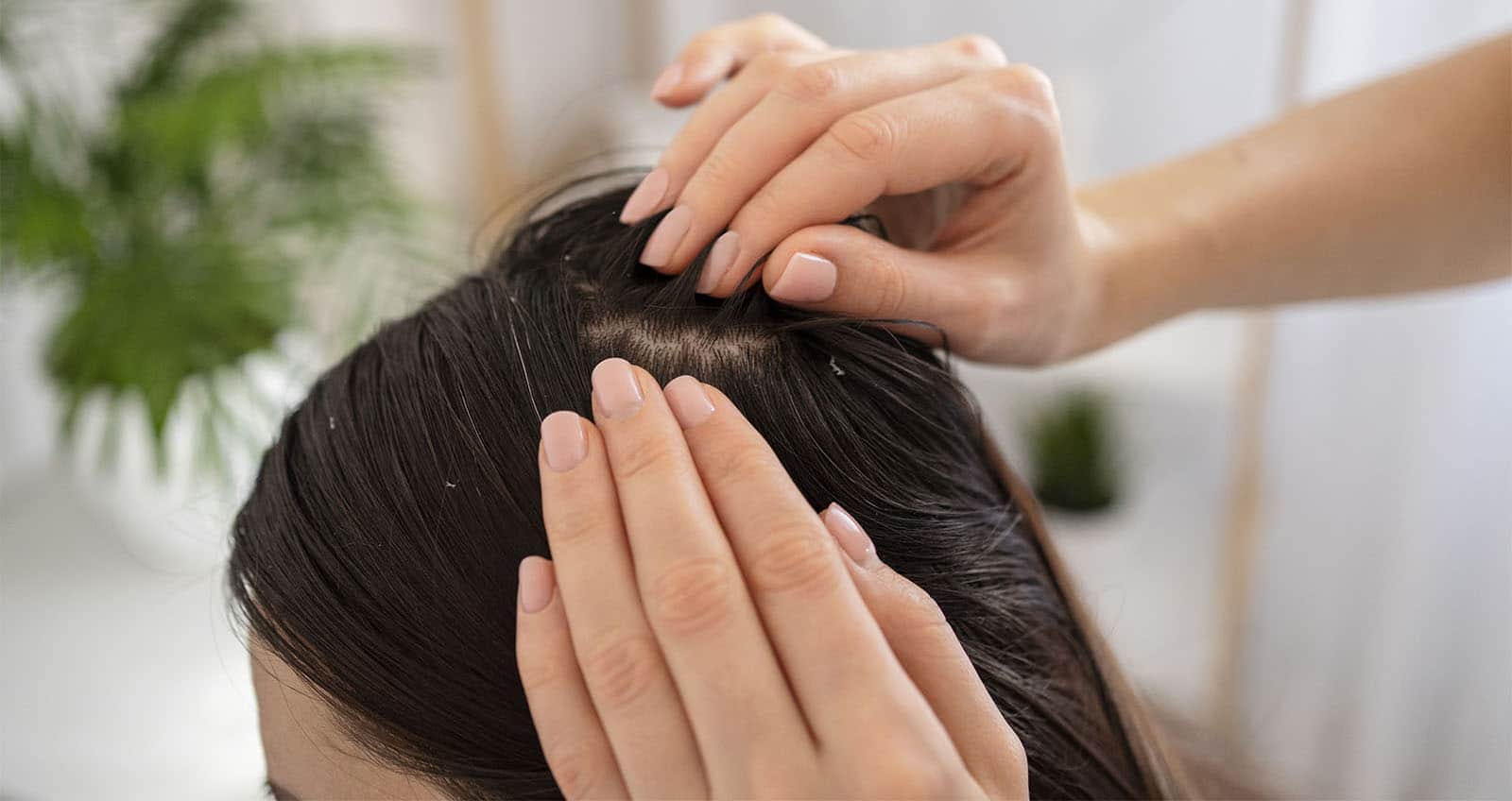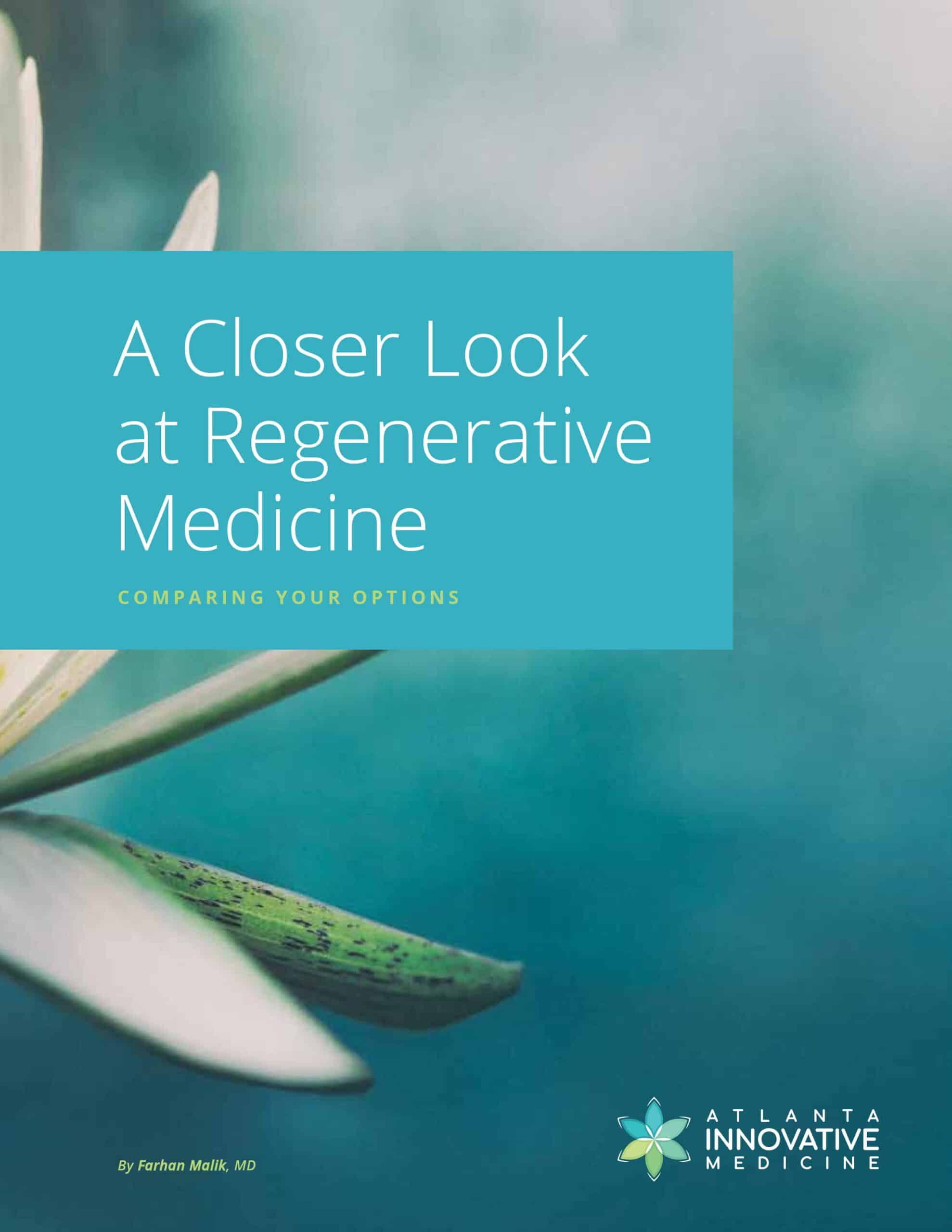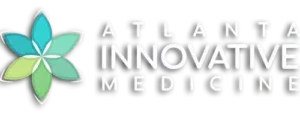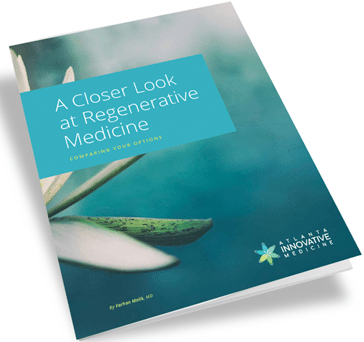By Farhan Malik, MD
Atlanta Innovative Medicine
Hair loss is an incredibly common issue, affecting millions of adults worldwide. In fact, nearly 50% of women, and up to 80% of caucasian men experience androgenetic alopecia (male or female pattern baldness).
While there are numerous treatments available for hair loss, most of them fall short, offering insufficient results, causing undesirable side effects, or remaining costly and inaccessible.
Medications, like Rogaine, and hair growth sprays, like Minoxidil, typically require long-term commitment and consistent usage to maintain results; and they often offer limited or temporary effectiveness. Surgical procedures, such as hair transplantation, are not only invasive and higher risk, but they are extremely costly.
AIM patient Carl Grimes had been looking for a hair growth treatment that could reverse a significant hairline recession and crown baldness, but none of the options felt accessible to him. “Hair transplants are ten to fifteen thousand dollars. There are pills and spray, but if you get started, you can’t stop.”
Fortunately, advancements in regenerative medicine have provided patients like Carl another option: an application of platelet-rich plasma therapy has been developed for effectively treating hair loss. With remarkable success rates across numerous clinical trials, PRP has captured the attention of hair loss experts and scientists and continues to advance through ongoing research, while also delivering exceptional results for patients right now.
Three months into PRP therapy for hair loss, we spoke to Carl about his treatment. “I didn’t know what to expect,” he admitted, “but I am very happy with it.”

What Is PRP Therapy?
PRP therapy is a modern regenerative therapy that involves drawing the patient’s blood, extracting high concentrations of healing platelets and growth factors, and injecting the concentrate into targeted areas to promote healing and regeneration. This therapy has shown immense success across various fields of medicine, including orthopedics, aesthetics, and of course, hair loss treatment.
How PRP Aids Hair Growth
The healing power of PRP lies in its rich concentration of platelets and numerous different growth factors, including epidermal growth factors that stimulate the dermal papilla cells, which are largely responsible for hair growth. When injected into the scalp, these growth factors both strengthen active hair follicles and reactivate dormant hair follicles to promote new growth and the formation of thicker, healthier hair strands.
Additional growth factors in PRP help to repair damaged blood vessels, improving blood circulation to the hair follicles. This enhanced blood flow ensures an adequate supply of oxygen and nutrients to the hair follicles, promoting their continued health and strength for long-term results.

PRP Therapy for Effectively Treating Hair Loss
PRP has shown promising results for treating patients suffering from androgenetic alopecia, alopecia areata, alopecia totalis, and hair loss caused by medications. One randomized, placebo-controlled study, for example, evaluated the efficacy of PRP therapy for female pattern hair loss and demonstrated significant improvement in hair volume and quality—results that were maintained throughout the 6-month follow-up.
In another study involving three treatment cycles on patients with pattern hair loss, a substantial increase in hair density was shown following PRP, including a mean increase of 33.6 hairs in the target area and a mean increase in total hair density of 45.9 hairs per square centimeter.
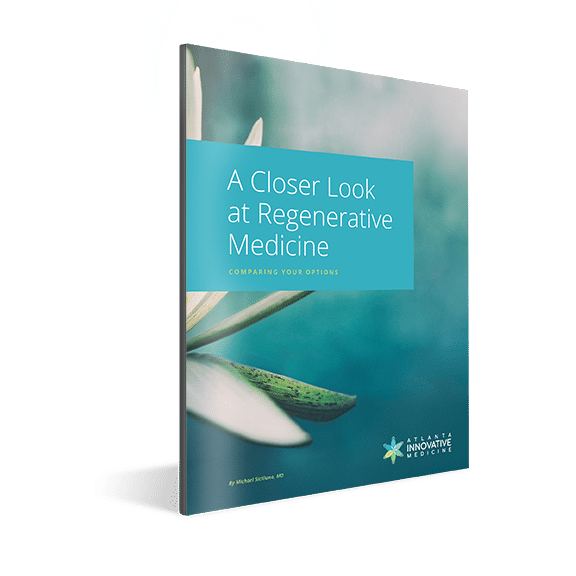
Subscribe for Expert Insights and Our Ebook
A Closer Look at Regenerative Medicine: Comparing Your Options Learn about treatment options like Platelet Rich Plasma (PRP), Prolozone Therapy, and Stem Cell Therapy.
PRP for Hair Loss at Atlanta Innovative Medicine
When patient Carl Grimes decided to try PRP therapy for male pattern hair loss, he didn’t know if it would work—especially since the cost was so much lower than other options he’d been presented with. Before treatment, he had thinning hair in the back of his head and about two inches of recess in the front. Now, after only three sessions, Carl has no recess. “I’m happy…I’m really happy,” he told us.
How Soon Do You See PRP Results?
Like all AIM patients, Carl began his PRP treatment with a consultation with our expert clinicians, who after careful examination, determined that he was a good candidate for the therapy. In March of 2023, he had his first PRP injection session. Most patients see significant hair growth within two months of starting treatment, and in fact, Carl noticed new growth within the first one.
Every patient is unique, and every patient’s hair follicles respond differently to treatment, which is why at Atlanta Innovative Medicine, we tailor our patients’ treatments for most effectively treating hair loss. Typically, we recommend one session per month for 3–5 months, but some patients require fewer treatments, and others require more before achieving peak hair growth.
For Carl, hair growth began after the first session, and after the first couple, it began to fill in and grow more than an inch in length. To reach his desired results, Carl needed only four sessions, though he plans to return for booster injections about every year, as we often recommend to patients for maintaining optimal results.
How Can PRP Treatment Be Tailored for Effectively Treating Hair Loss?
One of the most important reasons for a tailored approach when it comes to effectively treating hair loss is that different hair follicles will respond differently to PRP—some will require fewer injections to become fully active, and others will require more. At AIM, we closely monitor the hair follicles’ responses from one session to the next, targeting areas of slower growth. During Carl’s treatment, these differences became apparent after the second session, so to achieve balanced results, our clinicians started targeting specific areas during the third session.
What Can I Expect of PRP Injections in the Scalp?
The duration of PRP injection appointments varies from patient to patient and from session to session, but on average, appointments take about one hour from start to finish. Our clinicians begin the process by applying a topical analgesic to the scalp, helping to make injections more comfortable. After about 15 minutes to allow the numbing to set in, they begin the injections.
We invite our patients to request a break from injections whenever they need, so depending on how many breaks a patient requests, the remainder of the appointment can vary. For Carl, this process takes about 30 minutes.
Similarly, each patient’s comfort level during injections is different. Carl reports that the treatment “hurts here and there,” but that, especially with the use of the numbing cream, “it’s not unbearable.” And besides, he says, “No pain, no gain…I’ve got hair now. I’m really happy.”

And Carl isn’t alone. At AIM, we’ve helped hundreds of patients achieve their hair growth goals and regain confidence, and we take pride in our clinic’s high success rate for effectively treating hair loss. Our clinicians are dedicated to providing personalized care and ensuring that each patient’s specific needs are addressed throughout treatment.
If you’re struggling with hair loss and seeking an effective alternative to traditional treatments, we invite you to join patients like Carl in discovering the remarkable results of PRP therapy for hair loss. Give us a call to schedule a consultation, and take the first step toward restoring your hair and revitalizing the way you look and feel: 770.416.9995.
Quizzes
Are you a candidate for Regenerative Medicine?
Regenerative medicine can be an effective therapy and treatment option for lasting pain relief for a variety of conditions like osteoarthritis of the knee, hip or shoulder; ACL or meniscus tears; tennis or golfer’s elbow; chronic neck and back pain; and more.
Is it right for you and your condition? Take 1 minute to answer a few “yes or no” questions that help to assess if you might be a candidate for PRP, stem cell or other nonsurgical regenerative treatments.
Are You a Stem Cell Candidate for Your Joint or Spine Damage?
Are you a candidate for Platelet Rich Plasma (PRP) Therapy?
Do I have nonsurgical options for my injured or aging joints?
Take the Pain Medications Risk Quiz

Regenerative Medicine.
Reimagined
- Advanced hybrid therapies, including Mesenchymal Stem Cell therapy combined with different mechanisms of action that synergistically come together to support ultimate healing
- More powerful PRP that’s customized, amplified and personalized
- Therapies delivered by an experienced, compassionate team comprised of multidisciplinary experts in traditional and alternative medicine working as your team: Medical Doctors, Nurse Practitioners, Physiotherapists and Chiropractors
- Advanced training through the American Academy of Orthopedic Medicine, the American Osteopathic Association of Prolotherapy Regenerative Medicine, and more
All content of this page is for informational purposes only and is not intended to serve as a substitute for the consultation, diagnosis, and/or medical treatment of a qualified physician or healthcare provider. Individual results may vary. Your medical professional can explain all the risks and potential benefits of any therapy based on your specific circumstances. At this time regenerative therapies are not FDA approved. Neither Atlanta Innovative Medicine nor its physician affiliates promise regenerative therapies as a cure for any condition, disease, or injury.
Other Atlanta Areas We Service:
© 2024 Atlanta Innovative Medicine, LLC. All Rights Reserved. AIM Scholarship Opportunity


